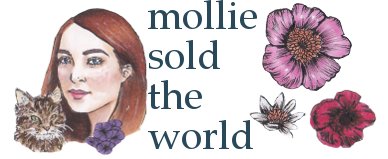“Anything worth living for,” said Nately,
“is worth dying for.”
“And anything worth dying for,” answered the sacrilegious old man, “is certainly worth living for.”
(I definitely thought I had pressed publish on this months ago…) We’ve reached the final day of this shoulda-been-on-Facebook-but-I-wanted-to-waffle-on-here-instead book thing, and clearly, it took a while to collate my thoughts on this one. So, for my final book I wanted to share my favourite novel of all time, Catch-22 by Joseph Heller. Having re-read this novel at least five times, it never fails to impress me; in fact, I find each re-read more rewarding. So you can imagine my excitement when the miniseries recently came out, and if you’ve also read this book, my crushing disappointment with the adaptation once it was finished. So rather than gush about this novel, I want to have a little chat about why the series didn’t work for me.

Set on a fictional Italian island during the Second World War, Catch-22 follows Captain Yossarian, a US Bombardier who is desperate to get out of the war. Whilst Yossarian is the focal character, the novel also details the lives of the men in his regiment, focusing on a different character each chapter. There are so many that it would have been impossible for the show to focus on each of them individually, so it largely focuses on Yossarian, with characters popping up briefly at the beginning of an episode, acting quirky in the middle, and then at the end they die. That is literally the plot of every episode from the mini-series, and it is ultimately the biggest problem I had with it, because other than it just being incredibly repetitive and predictable, it fails to understand one of the fundamental themes of the novel (in my opinion – obviously!)
I chose the quote at the top of this post for a reason. It is from a conversation Nately has in the novel, being one of the younger airmen on the base he is headstrong and proud and stupidly unafraid, even in the face of real danger. He is patriotic to a fault and continuously gets into arguments with an old Italian man who runs a brothel and who holds completely antithetical opinions to Nately. In this exchange they are arguing about the point (or pointlessness) of war, and why a country is (or isn’t) worth dying for. And here they reach a loggerhead. Nately declares anything worth living for would also be worth dying for, because that denotes its importance. But the old man disagrees, anything worth dying for is absolutely worth living for. Because life is important. Life is precious.
And that is the point of the novel. I can’t remember how half the characters die, honestly, outside of a few more memorable deaths. Heck, I didn’t even remember that Clevinger’s demise was in a disappearing plane! Because it was never more important than Clevinger himself, how principled he is and how utterly lacking in sense. I can’t remember how Nately dies, but I remember him as naïve, stupidly optimistic and hilariously smitten. In a story filled with instances where men in charge show completed disregard for the wellbeing of those under their command, viewing them as fodder to push them further up the ladder, viewing their worth in their deaths, it is hard not to read the long passages of back-and-forth conversation between two characters as important. To view their lives and opinions as important. To view them as important.
And that is what the show missed, in diminishing these characters down into just their deaths. That their only contribution to this story is to die, and that the only way to remember them is in their death, rather than in their life. It feeds into the same thought process as the fictional Generals in the novel. The TV series was Nately, arguing that death is what makes one worthy, whilst the book knows it is to live, in spite of it all.




